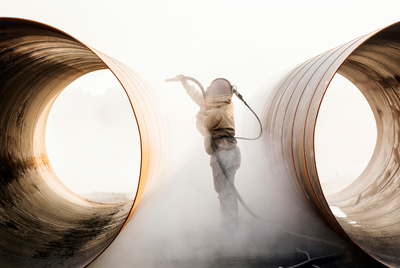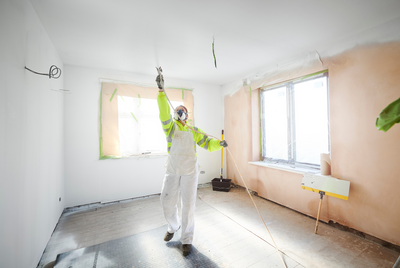25th Jul 2023
The main distinction between air-assisted airless and airless spray equipment is that the former utilises compressed air to give sprayers a greater degree of control. In terms of pricing, while airless spray pumps come in a lower initial cost, air-assisted airless pumps offer greater long-term made through paint savings in specific circumstances, such as spraying a lacquer or use the wood industry.
In these specific area’s sprayers have seen a 15-20% increase in transfer efficiency in comparison to airless units. This is achieved through the ability to change the spray fan to a round spray, better fineness in atomisation, needing less fluid pressure to achieve the same finish as airless. Which ultimately leads to paint savings through using less product.
So, how do air assist airless spray pumps work?
Several components make up this unit; a suction side colloquially called the wet end comprises the cylinder and its internal piston, cylinder filter, filter housing, suction hose, suction hose filter, prime tap, prime hose, and gun fluid hose connection. Above the wet end is the air motor, pressure regulator set and its taps (the one on the left for airspeed, the other for atomising the spray gun), compressor airline and connection, grounding wire, muffler, and spray gun air hose connection.
How to turn on a spray pump, in this case, the WIWA aircombi profit pump.
i)To effectively "switch on" the pump, make sure the prime tap is open, ensure the suction hose is in the bucket, the suction hose filter is in the fluid, the grounding wire is clipped, and the compressor hose is connected to the regulator set.
ii)Open the compressor ball valve, introduce air slowly into the pump by turning the tap, and wait till the pump turns over. All internal air inside the unit will escape from the prime hose and expel fluid after a short period, which indicates that the pump is primed.
iii)Once you are happy that all the air is out of the pump, shut the prime tap, and the next route of least resistance is to the gun itself.
iv)Flick back the trigger safety guard, and once ready, trigger the gun. Increase the pressure until you're spraying airless, which on this particular unit will be 3 bar.
v)If you want to spray air-assisted, turn the air assisted tap about 15-20 on the gauge, and pull the trigger. You can adjust the spray guns fan by manipulating the dials above the gun's grip.
vi)Once you've finished spraying, turn the air assist off, turn the pump down, and then dump the pressure by triggering the gun into the bucket. Once the pressure is dumped, disengage the air, flip up the trigger guard, and turn the pump off.




